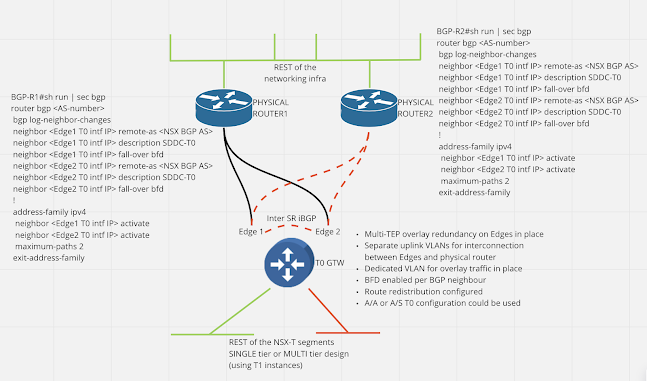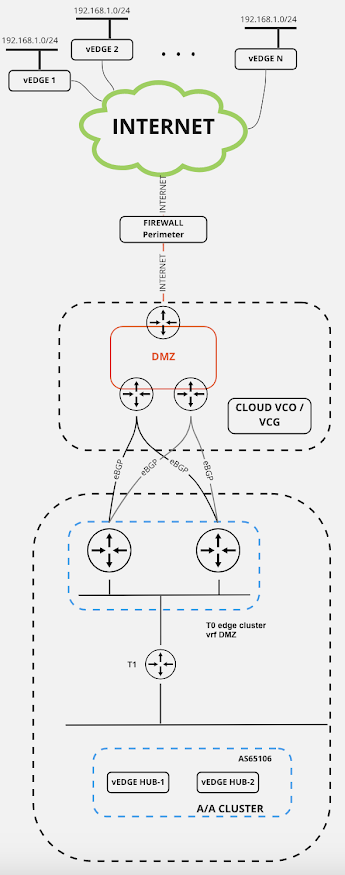NSX-T - North/South Edge uplink connection options and scenarios
In this, a little bit longer post, I'm going to explain a couple typical use case scenarios regarding different options used inside NSX-T environment for connection options on Edge side, regarding TEP and North/South traffic options. Every environment is special use case, but hope you will find here summary options which you can use for successful deployment and design planning. First, couple of assumptions that I made here:
- vSphere environment is v7.x
- vDS distributed switch is in place - this dramatically can simplify NSX-T design and implementation because of NSX support inside vSphere 7. vSphere ESXi is pre-requisite for this and if you have such kind of infra, unless you have some special reason - N-vDS is not necessary at all
- Basically, we are speaking here about post NSX-T v2.5 era where, similar to bare metal Edge nodes, Edge VM form factor also supports same vDS/N-VDS for overlay and external traffic - definitely no more "three N-VDS per Edge VM design", unless you really, really need it
- NICs per physical server - minimum 2 - ideally they should be at least 10Gbps, but for demo and labbing there is no problem going even with 1Gbps only. Also, depending on desired design someone can utilize even higher number of NIC ports, which of course will give you plenty of options where to dedicate different types of traffic (ie management, vMotion, vSAN, iSCSI etc.)
-It's worth mentioning that regarding stateful and stateless services interaction with edge nodes - T0 A/A or A/S design - you can choose where to deploy them in multi-tier setup (T0 and T1s). For example - you can configure T0s in A/A (this article is assuming A/A in it's scenarios) setup and T1 in A/S because you need some of the statefull services (ie NAT, VPN etc.). Also, for highly scalable environments, different Edge clusters hosting only T0 or T1 routing instances are possible.
SCENARIO 1 - Single upstream router / redundant UPLINKS
Next picture shows this type of scenario - in this case with dual uplinks, which can be Active/Active using ECMP or Active/Standby, using appropriate BGP config on T0 routing instance inside Edge cluster:
Relevant overview config, from NSX-T and Cisco IOS perspective, is also shown, with BFD in place as advanced mechanism for link failure detection.
SCENARIO 2 - Dual upstream router / single UPLINK per Edge
This setup involves redundancy at the ToR level. T0 gives option in A/A setup for inter SR BGP routing support on it. Prefer whole routing through just one ToR instance, or using both as A/A for subset of networks - all scenarios are possible using appropriate T0 BGP config. Inter SR routing exchange helps in scenario where ToR routing boxes have same information regarding rest of network infrastructure, inside their routing tables.
Relevant config, with short scenario description is available.
SCENARIO 3 - Dual upstream router / dual UPLINK per Edge
If possible - there is also an option to jump with total 4 uplinks toward physical ToRs. This gives all the nice redundancy options from Scenario 2 plus high throughput by using ECMP and all active paths toward ToR boxes.
.png)



Comments
Post a Comment